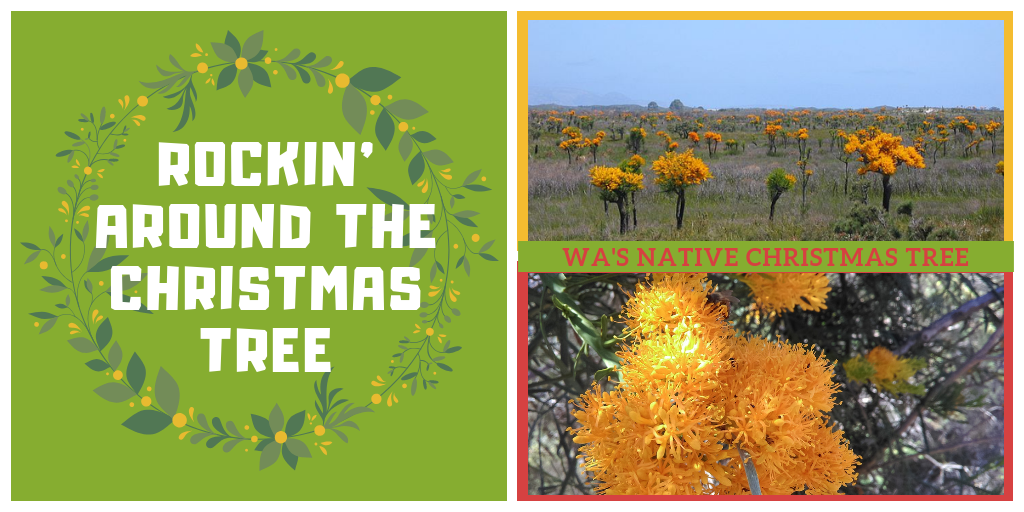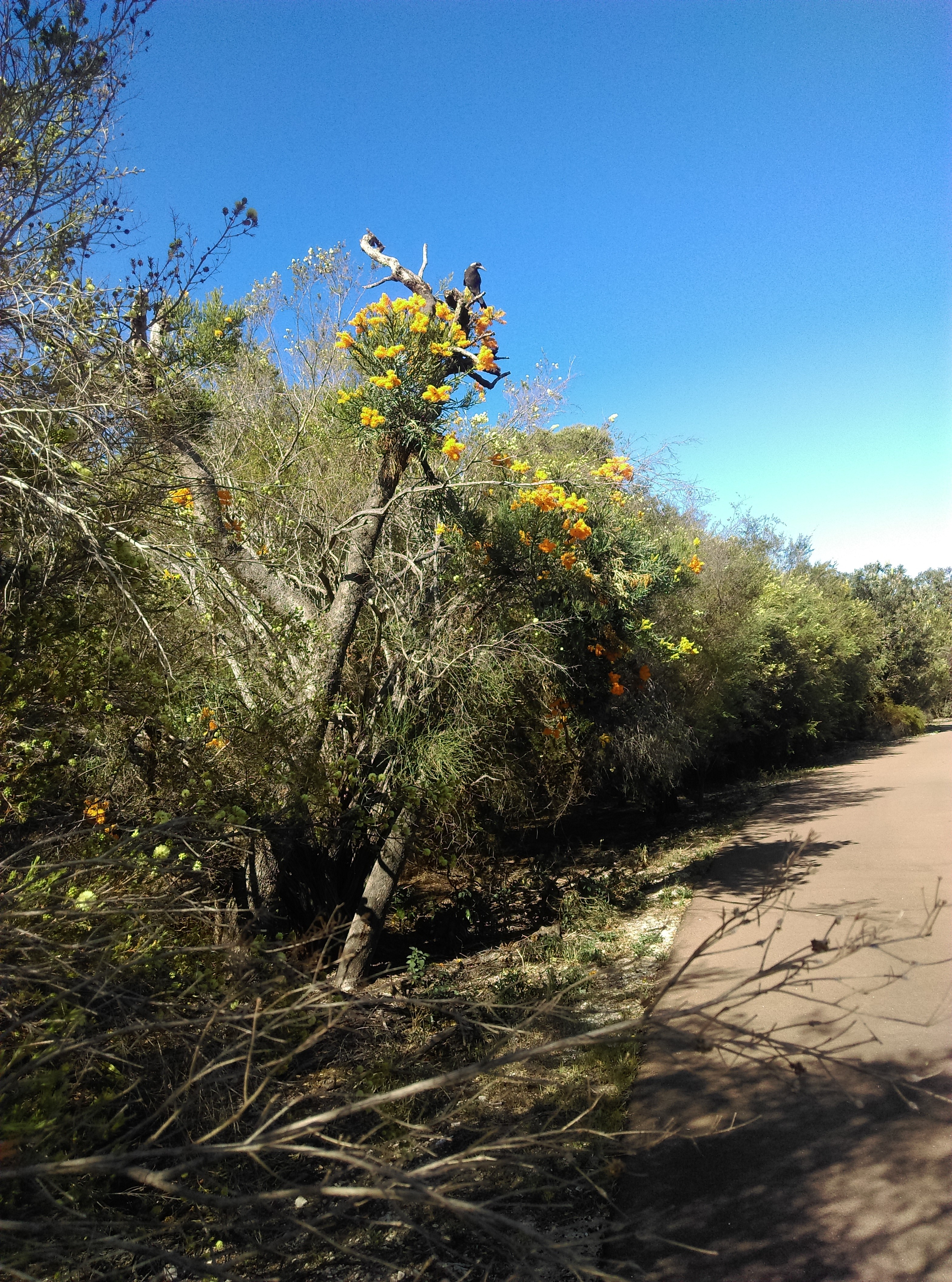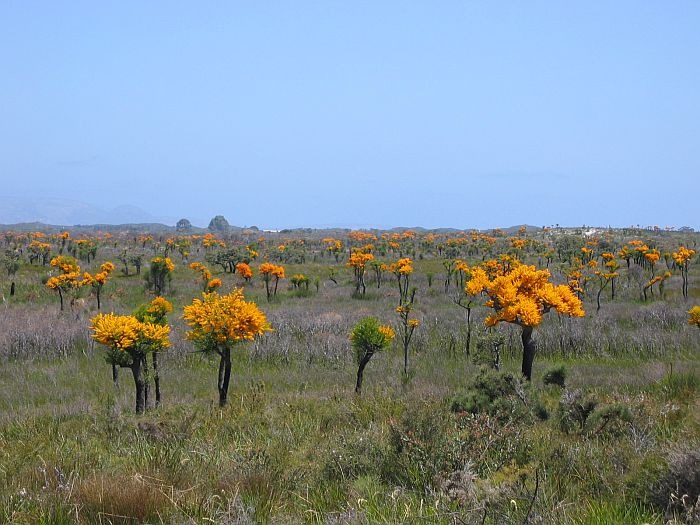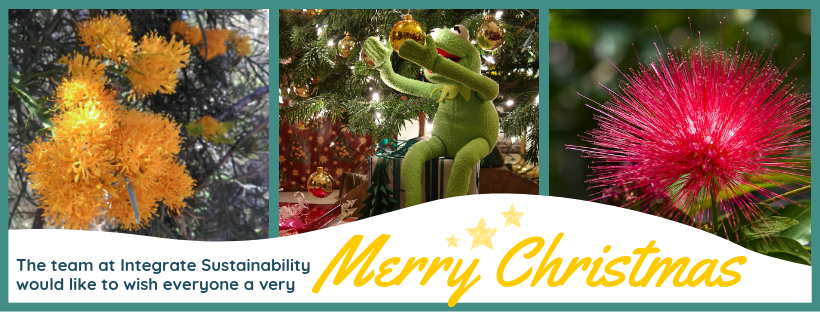O Christmas tree, O Christmas Tree, of the parasitic plants, you are by far the most radiant. With your spectacular outbursts of orange blossoms from November to December, you light up the south-west to ring in Christmas Day. It is no wonder Nuytsia floribunda has been colloquially termed the native Christmas Tree in WA.
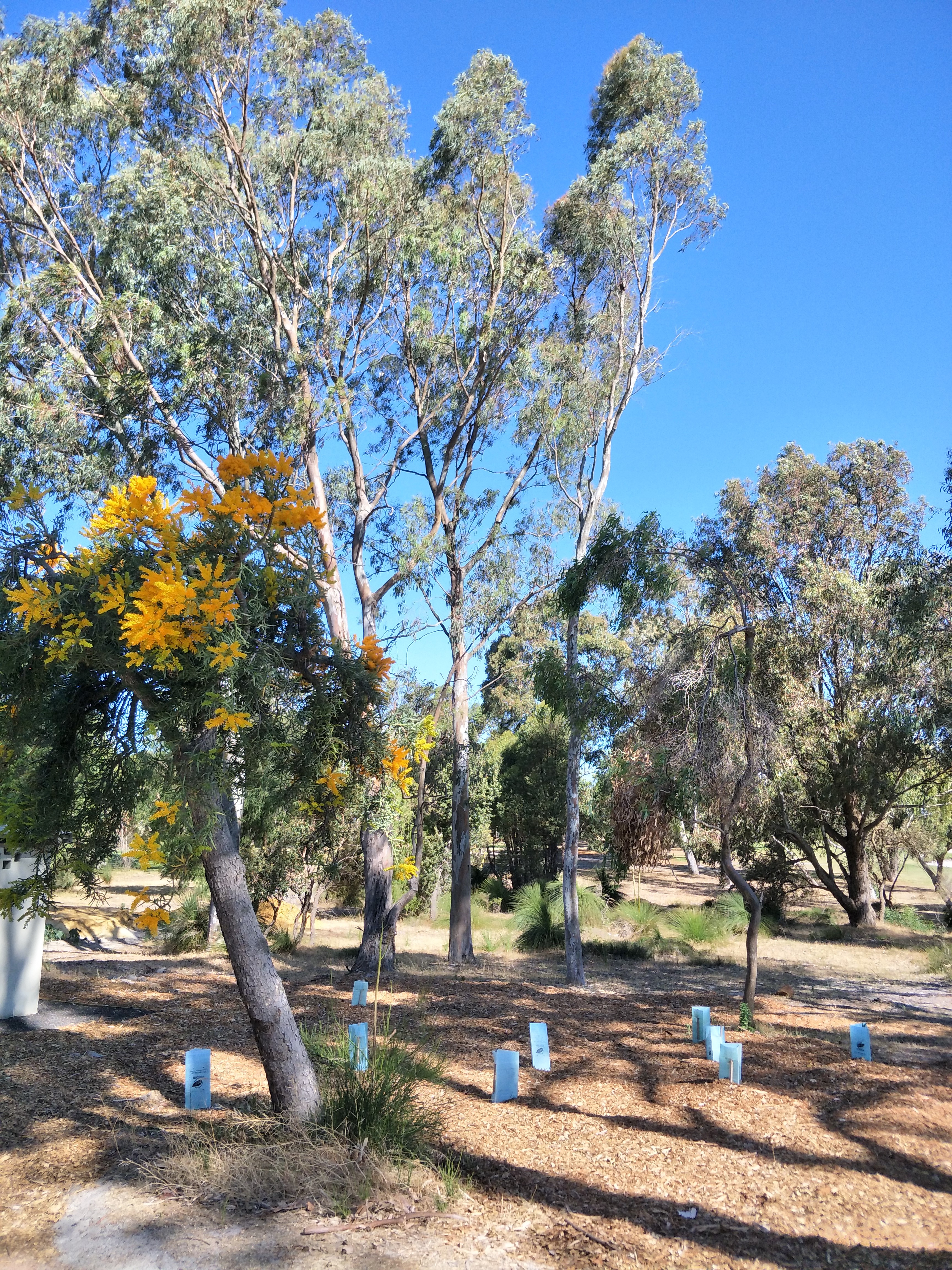 Meet me Under the Mistletoe
Meet me Under the Mistletoe
As a member of the Loranthaceae family, the Christmas Tree is also a mistletoe. Like that weird cousin at the family lunch, Nuytsia floribunda stands apart from the mistletoe family by growing as a tree rather than a canopy-based mistletoe (Low, 2017). Instead, the native Christmas Tree grows as a root hemiparasite which attaches to a host plant by cutting through the host roots using sclerenchymatous prongs that act as scissors (Calladine, Pate, & Dixon, 2000; Calladine & Pate, 2000). The native Christmas Tree then proceeds to suck up water and nutrients from the host roots (Low, 2017). A whole new meaning to kissing under the mistletoe.
Presents on the Tree
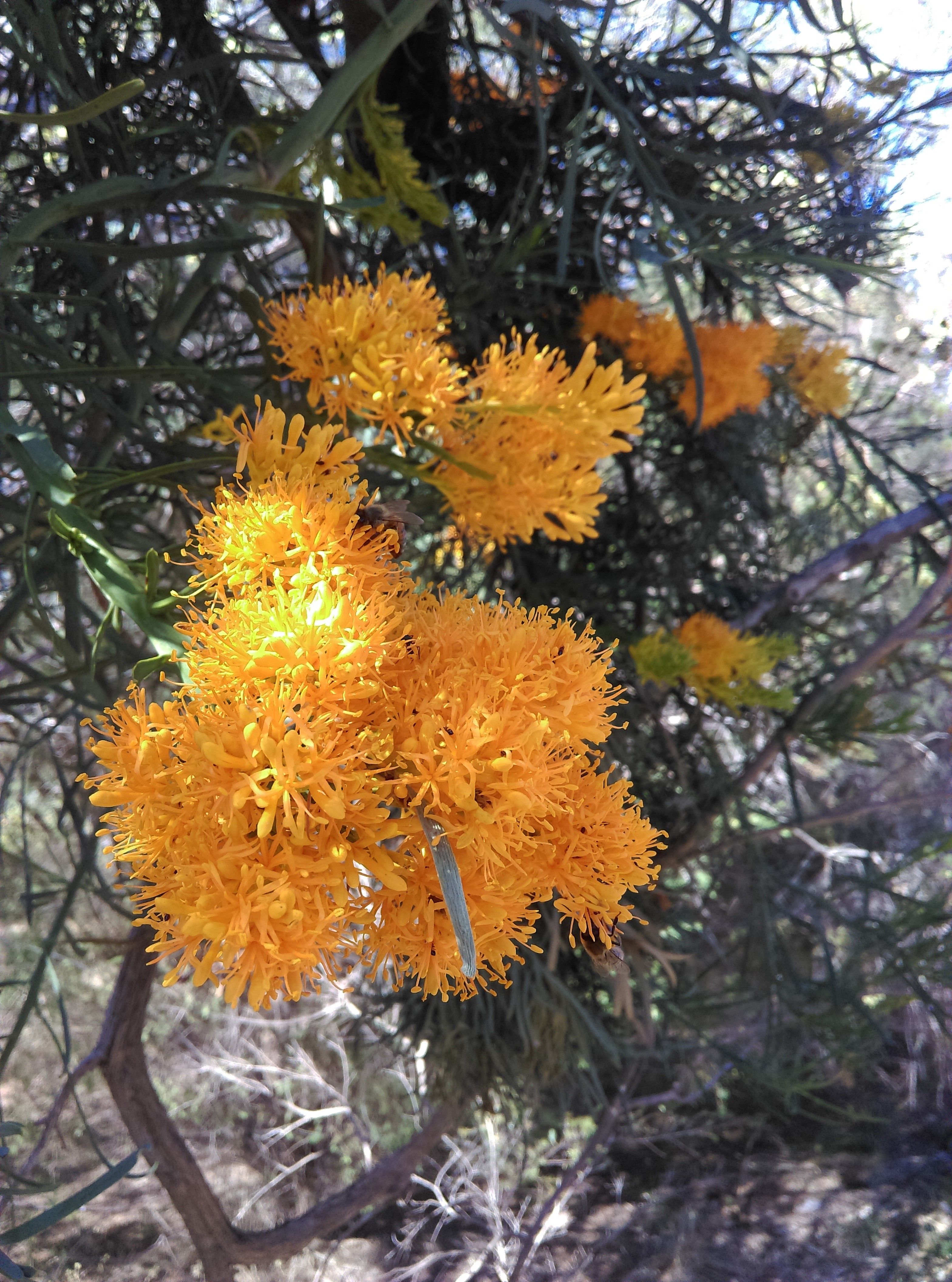 Not only is the native Christmas Tree striking to look at, but the species also holds significance to the Noongar people of the Perth area. In the Noongar language the tree is mudja and has a spiritual significance and connection to the afterlife as a place where spirits of the recently passed resided (Ryan, 2015; Low, 2017). Groups from elsewhere in the south-west pulled the roots up to eat the sweet, starchy material or mixed the flowers with water for a sugary drink (Ryan, 2015).
Not only is the native Christmas Tree striking to look at, but the species also holds significance to the Noongar people of the Perth area. In the Noongar language the tree is mudja and has a spiritual significance and connection to the afterlife as a place where spirits of the recently passed resided (Ryan, 2015; Low, 2017). Groups from elsewhere in the south-west pulled the roots up to eat the sweet, starchy material or mixed the flowers with water for a sugary drink (Ryan, 2015).
Early explorers and settlers have also been captivated by this tree with records describing a ‘fire-tree’ or ‘flame tree’ in reference to the dazzling display of orange blossoms (Ryan, 2015). Other records talk of a ‘cabbage tree’ in reference to the tender green leaves and apparent pungent smell from cutting into the wood (Ryan, 2015).
Making a List and Checking it Twice
Recently, the native Christmas Tree has been included on the ClimateWatch list as an indicator species. ClimateWatch is a national program developed by EarthWatch Australia to better understand how climate change is affecting ecosystems (EarthWatch Institute, 2018). By participating in ClimateWatch citizens can help collect and record data to help shape Australia’s scientific response to climate change (EarthWatch Institute, 2018). The Christmas Tree is a great indicator species because of its iconic and showy nature (EarthWatch Institute, 2018). ClimateWatch expects that the Christmas Tree will begin shooting and flowering earlier in the year as a result of climate change (EarthWatch Institute, 2018). Participating in ClimateWatch and recording sightings of the Christmas Tree is a great way to add to the knowledge of this species and the impacts of climate change in the south-west. More details on ClimateWatch are available from their website: http://www.climatewatch.org.au/.
Integrate Sustainability wishes its client and friends a Merry Christmas and a Safe New Year. We look forward to sharing our Insights with you again in 2019.
Download PDF: ISPL Insight – Native Christmas Tree
References
Calladine, A., & Pate, J. (2000). Haustorial Structure and Functioning of the Root Hemiparastic Tree Nuytsia foribunda (Labill.) R.Br. and Water Relationships with its Hosts. Annals of Botany, 85, 723-731. doi:10.1006/anbo.2000.1130
Calladine, A., Pate, J., & Dixon, K. (2000). Haustorial development and growth benefit to seedlings of the root hemiparasitic tree Nuytsia floribunda in association with various hosts. Annals of Botany, 85, 733-740. doi:10.1006/anbo.2000.1129
EarthWatch Institute. (2018, December 13). ClimateWatch. Retrieved from Get Involved: http://www.climatewatch.org.au/get-involved/land
EarthWatch Institute. (2018, December 13). ClimateWatch. Retrieved from What to Observe? WA Christmas Tree: http://www.climatewatch.org.au/species/plants/wa-christmas-tree
Low, T. (2017, May 15). Australia’s giant parasitic Christmas tree. Retrieved from Australian Geographic: https://www.australiangeographic.com.au/blogs/wild-journey/2017/05/australias-giant-parasitic-christmas-tree/
Ryan, J. (2015). A Very Striking Parasite. Griffith Review, 47. Retrieved from Griffith Review: https://griffithreview.com/articles/striking-parasite/

